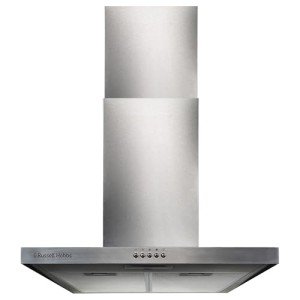
Cooker Extractors
Add a review FollowOverview
-
Founded Date 27 juni 1982
-
Posted Jobs 0
-
Viewed 6
Company Description
5 Killer Quora Answers On Cooker Extractor Fans
Understanding Cooker Extractor Fans: A Comprehensive Guide
Cooking is an art that combines flavor with technique, and it often features a little bit of mess. Among the important components in preserving a tidy and healthy kitchen environment is the cooker extractor fan. These devices become part of the kitchen’s ventilation system, developed to whisk away smoke, steam, odors, and air-borne particles that can collect during cooking. This blog site post aims to provide a thorough understanding of cooker Extractor fans [Winfordhildebrant.top], their types, benefits, installation, maintenance pointers, and responses to often asked questions.
What is a Cooker Extractor Fan?
A cooker extractor fan, likewise understood as a range hood or kitchen hood, is a device set up above the cooking location. It works to filter and expel undesirable odors, steam, and air-borne grease, thus maintaining excellent air quality in the kitchen. These fans can be found in different sizes, designs, and functionalities, dealing with different kitchen designs and cooking styles.
Table 1: Types of Cooker Extractor Fans
| Type | Description | Advantages | Downsides |
|---|---|---|---|
| Wall-Mounted | Set up on the wall above the cooking range | Space-efficient, visual appeal | Needs wall area and ducting |
| Island | Hangs above kitchen islands | Stylish, suitable for open layouts | More pricey, needs ceiling assistance |
| Under-Cabinet | Fits underneath kitchen cabinets | Compact, does not use up extra area | Restricted power, may need ducting |
| Downdraft | Pop-up fan integrated into the cooktop | Minimalistic style, saves space | Less effective than ducted choices |
| Ceiling-Mounted | Installed in the ceiling, typically in bigger kitchens | Covers large areas, modern style | Expert setup needed |
The Importance of Cooker Extractor Fans
-
Improved Air Quality: Cooking often launches harmful toxins and grease particles. An extractor fan assists eliminate these contaminants, ensuring much healthier air in the kitchen.
-
Smell Control: Different cuisines produce distinctive smells. An excellent cooker extractor fan efficiently lowers lingering smells, making the kitchen a pleasant space.
-
Moisture Reduction: Steam produced throughout cooking can cause moisture accumulation, which might promote mold development. An extractor fan assists manage humidity levels in the kitchen.
-
Cleaner Environment: By capturing grease and vapors, extractor fans add to a cleaner kitchen environment, decreasing the need for frequent cleansing.
Selecting the Right Extractor Fan
Selecting an extractor fan includes thinking about numerous aspects, consisting of kitchen size, style, and cooking practices. Here are the bottom lines to bear in mind:
Table 2: Factors to Consider When Choosing an Extractor Fan
| Aspect | Factor to consider |
|---|---|
| Kitchen Size | Larger kitchens may need more powerful fans |
| Ducted vs. Ductless | Ducted fans vent outdoors; ductless recirculate air with filters |
| Noise Level | Examine for fan noise ratings; quieter designs are preferable |
| CFM Rating | Think about the fan’s air flow performance, normally determined in Cubic Feet per Minute (CFM) |
| Style | Select a design that matches your kitchen decor |
Installation and Maintenance
Proper installation and routine upkeep are important for ideal efficiency.
Setup Tips
- Follow Manufacturer’s Instructions: Always speak with the setup handbook for particular guidelines.
- Hire a Professional: For ducted choices, expert installation might be necessary to make sure correct venting.
- Placement: The fan must be installed at the appropriate height above the cooking range, usually 20– 30 inches for electrical and 24– 30 inches for gas ranges.
Upkeep Tips
- Clean Filters Regularly: Most extractor fans featured removable filters that must be cleaned up or replaced frequently to ensure effectiveness.
- Inspect Fan Blade: Ensure the fan blades are tidy to prevent motor stress.
- Examine Ducts: For ducted designs, regular evaluation and cleansing of ducts can avoid blockages and improve airflow.
Regularly Asked Questions (FAQ)
-
How typically should I clean my cooker extractor fan?
- It is recommended to clean up the fan’s filters monthly and to deep tidy the whole system every 6 months.
-
Do I need to use a ducted extractor fan?
- Ducted fans are more effective as they vent air exterior. However, if installation is a problem, ductless options with triggered charcoal filters are suitable options.
-
What is the ideal CFM for my kitchen?
- A basic rule is that the CFM ought to be 100 for every single 10,000 BTUs of the stove. For average cooking, a fan with a CFM ranking of 300-600 is usually appropriate.
-
Are extractor fans loud?
- Sound levels differ. When selecting a fan, search for designs with lower sones (a step of volume), ideally listed below 3 for a quieter operation.
-
Can I set up an extractor fan myself?
- While some models, like under-cabinet fans, might be simpler for DIY installation, ducted designs normally need professional assistance.
Cooker extractor fans play an essential role in boosting both the functionality and comfort of a kitchen. With various types readily available, understanding their features, benefits, and upkeep requirements can help house owners make informed options. Whether cooking a simple meal or crafting a premium masterpiece, a well-ventilated kitchen makes all the difference. Purchasing a suitable extractor fan not just improves air quality but also contributes to a cleaner, more satisfying cooking environment.


